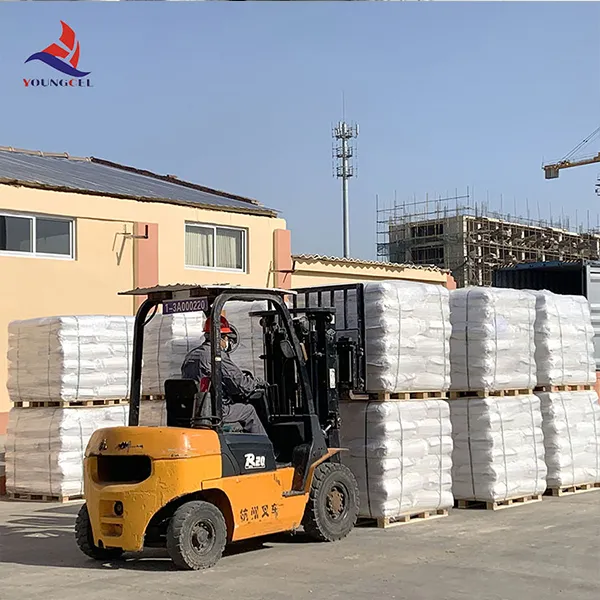Chemical Characteristics and Applications of HPMC
Hydroxypropyl Methylcellulose (HPMC) is a versatile polymer extensively utilized in various industries, primarily in pharmaceuticals, food products, construction, and personal care items. As a cellulose ether, HPMC is derived from natural cellulose through a series of chemical modifications, which enhance its properties for diverse applications.
Chemical Composition and Structure
HPMC is a non-ionic, water-soluble polymer, characterized by the introduction of hydroxypropyl and methoxy groups into the cellulose backbone. This modification not only increases the solubility of the polymer in cold water but also alters its thermal properties. The composition of HPMC varies in terms of the degree of substitution, which influences its molecular weight and viscosity. Typically, the methoxy content ranges from 19% to 30%, and the hydroxypropyl content varies between 7% to 12%. This diversity in chemical composition allows for tailored properties, making HPMC a valuable ingredient in numerous applications.
Applications in Pharmaceuticals
In the pharmaceutical industry, HPMC is widely recognized for its role as a binding and film-forming agent in tablet formulations. Its excellent water retention properties enhance the controlled release of active pharmaceutical ingredients (APIs), enabling better bioavailability and efficacy of medications. Moreover, HPMC is utilized in the fabrication of hydrogels and ocular inserts, providing sustained drug delivery for therapeutic applications. Its biocompatibility and ability to form viscous solutions make it suitable for various medical applications, including wound dressings and tissue engineering.
Role in Food Products
chemical hpmc

HPMC has gained significant traction in the food industry as a food additive. Its thickening and emulsifying properties make it an ideal ingredient in sauces, dressings, and gluten-free products. Acting as a stabilizer, HPMC helps to maintain the texture and consistency of food products while also improving shelf life. Moreover, its ability to retain moisture plays a critical role in enhancing the quality and mouthfeel of baked goods, contributing to customer satisfaction and product appeal.
Importance in Construction
In construction, HPMC serves as a crucial additive in cement-based materials such as mortar and tile adhesives. By enhancing water retention, workability, and adhesion properties, HPMC contributes to the strength and durability of construction materials. Its ability to form a gel-like consistency upon hydration assists in preventing rapid evaporation, thus ensuring optimum performance during application. This property is particularly beneficial in areas with demanding environmental conditions, where traditional materials may fail to deliver satisfactory results.
Utilization in Personal Care Products
The cosmetic and personal care industry also benefits from HPMC's unique properties. Commonly found in products such as shampoos, lotions, and creams, HPMC functions as a thickener and stabilizer, improving texture and consistency. Additionally, its film-forming characteristics provide a protective barrier on the skin, enhancing product longevity and effectiveness. HPMC is favored in formulations that aim for a clean and natural aesthetic, as it is derived from renewable resources.
Conclusion
In conclusion, Hydroxypropyl Methylcellulose stands out as a multifunctional and adaptable polymer with significant implications across diverse sectors. Its unique chemical composition and versatile properties enable innovative solutions tailored to specific needs, contributing to advancements in pharmaceuticals, food technology, construction, and personal care products. As industries continue to evolve, the demand for HPMC and its applications is likely to expand, emphasizing the importance of this remarkable chemical in modern formulations.
-
The Application and Significance of Construction RdpNewsMay.19,2025
-
Industrial Grade HpmcNewsMay.19,2025
-
Building Coating Adhesive Building Coating Adhesive HpmcNewsMay.19,2025
-
Application Of Hpmc For Detergent For Detergent In DetergentsNewsMay.19,2025
-
Application Of Hpmc Cellulose In Cement-Based MaterialsNewsMay.19,2025
-
Application Of High Quality Hpmc For Construction In The Field Of ConstructionNewsMay.19,2025




